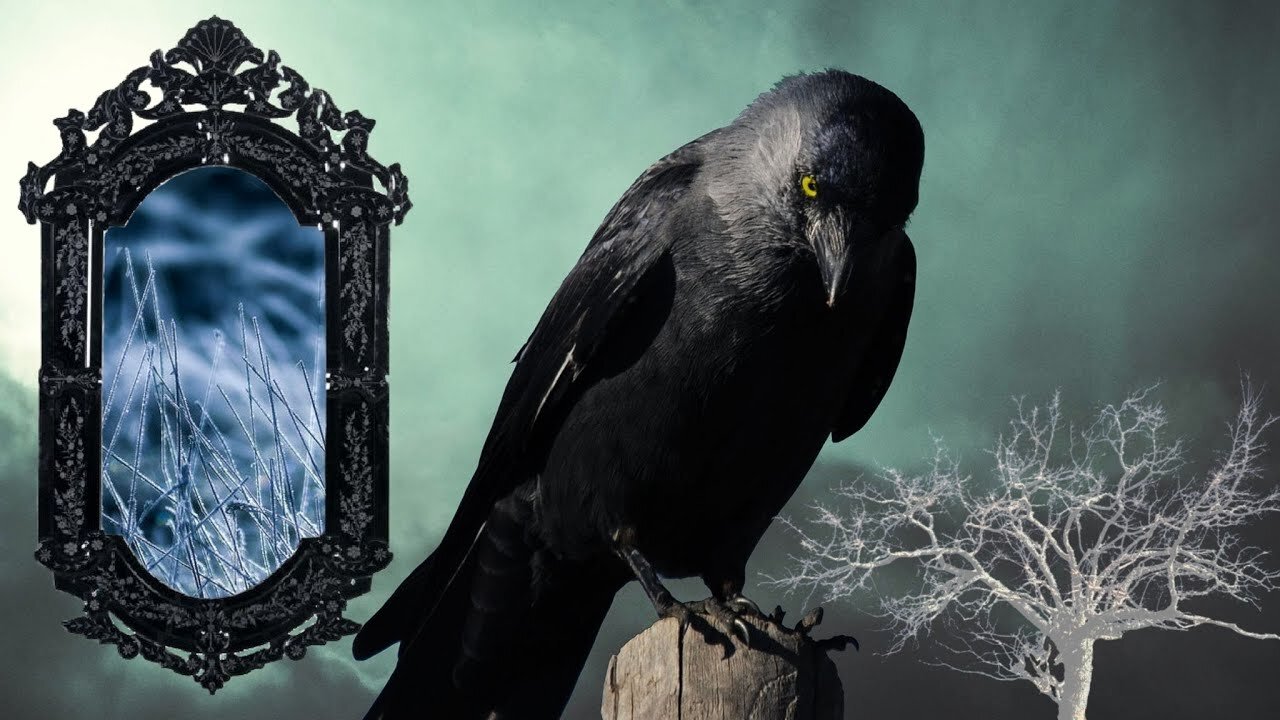Premium Only Content

PART 2: NOCTURNALITY & THE DARKENED OBSIDIAN MIRROR OF THE NIGHT: THE BLACK FLAME & LUNAR GNOSIS
Watch part 1 of the series here: https://youtu.be/Sp49ItScLPI
Let us continue our discussion regarding the magic & solace of the night. Let us elaborate on the many benefits of a nocturnal lifestyle & let us expound upon the vast reservoir of power that can be tapped into within the absence of light. We start off our journey with a brief discussion about the inner temple, and the 4 main magickal exercises. We then go deep into the discussion of Nocturnality & why its so important in this day & age. We have a lot to discuss. Let us not waste time...
The night offers us a unique period of isolation and solitude. Within this realm of quietude, the intelligent individual has a significant chunk of time to his or herself where they can work their magick, sorcery, meditations, yoga, mantras, etc. One can indeed use the night as an anchoring point for their personal self evolution, free from the distractions and obligations of the day. Let us discuss the hidden path to lunar gnosis & the road not often trod: the nocturnal path.
We also discuss the assemblage point, its role in the expansion of human awareness, and how the night serves as a valid launch point for healthy shifts of the assemblage point. We also go over how the intentional shifting of ones awareness into states of non-ordinary reality ( by way of shifting the assemblage point ) can lead to a fracturing of the outdated, mind controlled self. When this happens, 99% of the time, an individual by default will slowly start to retract from the insanity of the day, and seek the solace of the night. This is largely due to the mind & bodies need to integrate and assimilate into a new state of being.
" Nocturnality is an animal behavior characterized by being active during the night and sleeping during the day. The common adjective is "nocturnal", versus diurnal meaning the opposite.
Nocturnal creatures generally have highly developed senses of hearing, smell, and specially adapted eyesight.[1] Some animals, such as cats and ferrets, have eyes that can adapt to both low-level and bright day levels of illumination (see metaturnal). Others, such as bushbabies and (some) bats, can function only at night. Many nocturnal creatures including tarsiers and some owls have large eyes in comparison with their body size to compensate for the lower light levels at night. More specifically, they have been found to have a larger cornea relative to their eye size than diurnal creatures to increase their visual sensitivity: in the low-light conditions. Nocturnality helps wasps, such as Apoica flavissima, avoid hunting in intense sunlight. "
~ https://en.wikipedia.org/wiki/Nocturnality
-
 LIVE
LIVE
Rebel News
48 minutes agoCarney's flawed LNG deal, Libs keep mass immigration, Poilievre's plan to fix it | Rebel Roundup
214 watching -
 LIVE
LIVE
Side Scrollers Podcast
2 hours agoINSANE Illegal Migrant Propaganda Xbox Game + Paypal REFUSES To Pay Dev + More | Side Scrollers
294 watching -
 27:39
27:39
Crypto.com
3 hours ago2025 Live AMA with Kris Marszalek, Co-Founder & CEO of Crypto.com
39.7K4 -
 LIVE
LIVE
TheAlecLaceShow
1 hour agoMAGA Pushback Against Flag Burning EO & 600K Chinese Students | Cashless Bail | The Alec Lace Show
75 watching -
 1:09:18
1:09:18
SGT Report
16 hours agoBIOHACKING 101: MAKING BIG PHARMA IRRELEVANT -- Dr. Diane Kazer
21.5K19 -
 DVR
DVR
JuicyJohns
5 hours ago $1.35 earned🟢#1 REBIRTH PLAYER 10.2+ KD🟢
42K -
 LIVE
LIVE
The Mel K Show
1 hour agoMORNINGS WITH MEL K - The Future of the Constitutional Republic: Local Action for National Impact 8-26-25
699 watching -
 LIVE
LIVE
The Shannon Joy Show
3 hours ago🔥🔥TACO Trump Rug Pulls AGAIN - Deploying His Fascist Police State In Red States NOT Blue.🔥🔥
211 watching -
 29:43
29:43
Grant Stinchfield
2 hours agoBig Pharma’s Dirty Secret: It Writes the Medical School Curriculum
1641 -
 1:10:58
1:10:58
vivafrei
4 hours agoBanning the Burning of the Flag? Raja Jackson Assault & Some Insanely Stupid Takes! NYC Chems & MORE
29.1K42